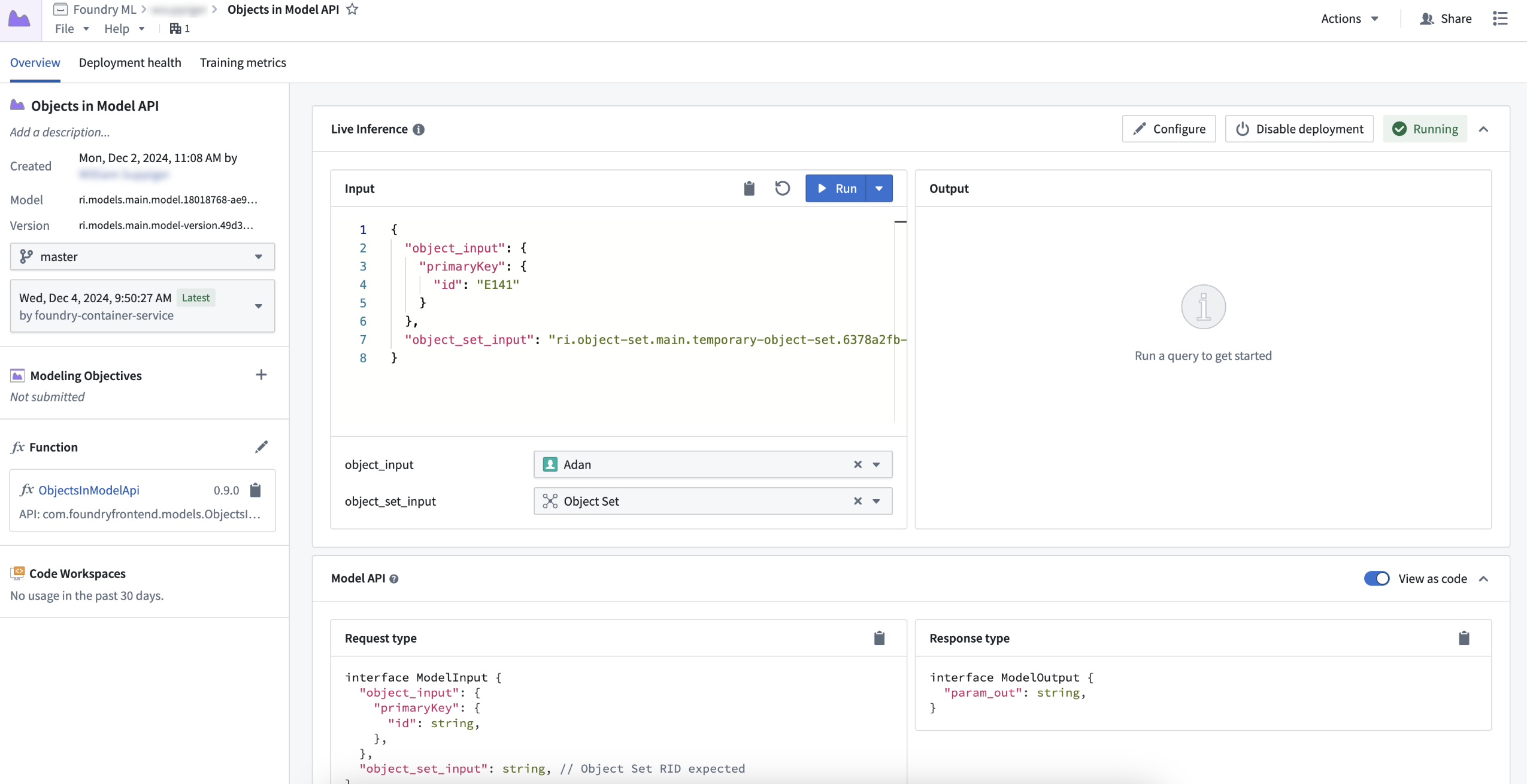Integrate models with the Ontology
This section provides examples on how to leverage the Ontology with models using the Ontology SDK and Platform SDK.
Object and object set inputs in model adapters
You can define a model adapter with object and object set inputs in the api() class method of a model adapter. After creating an ontology_sdk package through Developer Console or Code Workspaces, the objects can be used in the model adapter as inputs:
Copied!1 2 3 4 5 6 7 8 9 10 11 12 13 14 15 16 17 18 19from ontology_sdk.ontology.objects import Employee from ontology_sdk.ontology.object_sets import EmployeeObjectSet class ObjectsInModelApiAdapter(pm.ModelAdapter): ... @classmethod def api(cls): inputs = { "object_input": pm.Object(Employee), "object_set_input": pm.ObjectSet(EmployeeObjectSet) } outputs = { "param_out": pm.Parameter(type=str) } return inputs, outputs def predict(self, object_input, object_set_input): ....
To pass in an object or object set for testing, you can select inputs from the Ontology on the model query page when a direct model deployment is running. You can also publish a function on the left side-bar using the Ontology object or object set inputs.

Use the Platform SDK in a model adapter
You can query functions, objects, and LLMs with the Ontology SDK and Platform SDK by using FoundryClient() in models through the predict or transform method of a model.
Copied!1 2 3 4 5 6 7 8 9from ontology_sdk import FoundryClient class ObjectsInModelApiAdapter(pm.ModelAdapter): .... def predict(self, employee_primary_key): client = FoundryClient() client_first_name = client.ontology.objects.Employee.get(employee_primary_key).first_name ...
This allows for pro-code LLM based workflows where you can interact with the Ontology and utilize traditional modeling techniques to produce more accurate predictions.